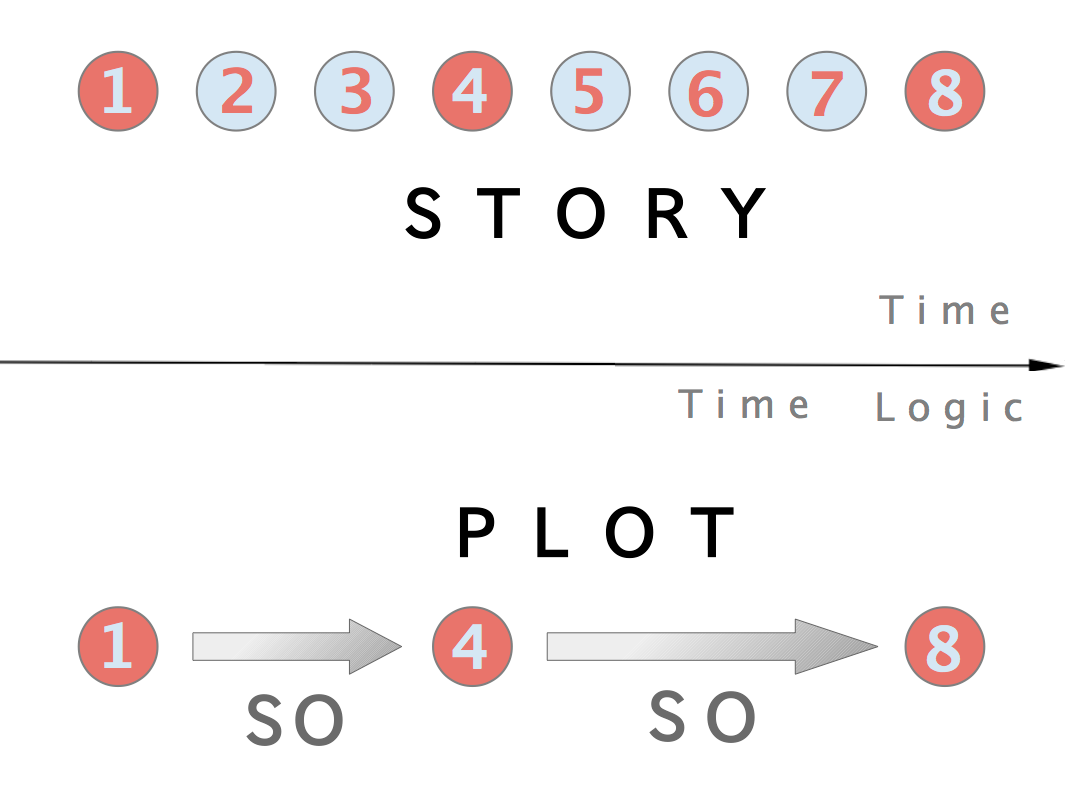|
Narrative Thread
A narrative thread, or plot thread (or, more ambiguously, a storyline), refers to particular elements and techniques of writing to center the story in the action or experience of characters rather than to relate a matter in a dry "all-knowing" sort of narration. Thus the narrative threads experienced by different but specific characters or sets of characters are those seen in the eyes of those characters that together form a plot element or subplot in the work of fiction. In this sense, each narrative thread is the narrative portion of a work that pertains to the world view of the participating characters cognizant of their piece of the whole, and they may be the villains, the protagonists, a supporting character, or a relatively disinterested official utilized by the author, each thread of which is woven together by the writer to create a work. By utilizing different threads, the writer enables the reader to get pieces of the overall plot while positioning them to identify with t ... [...More Info...] [...Related Items...] OR: [Wikipedia] [Google] [Baidu] |
Plot (narrative)
In a literary work, film, or other narrative, the plot is the sequence of events in which each event affects the next one through the principle of cause-and-effect. The causal events of a plot can be thought of as a series of events linked by the connector "and so". Plots can vary from the simple—such as in a traditional ballad—to forming complex interwoven structures, with each part sometimes referred to as a subplot or ''imbroglio''. Plot is similar in meaning to the term ''storyline''. In the narrative sense, the term highlights important points which have consequences within the story, according to American science fiction writer Ansen Dibell. The term ''plot'' can also serve as a verb, referring to either the writer's crafting of a plot (devising and ordering story events), or else to a character's planning of future actions in the story. The term ''plot'', however, in common usage (for example, a "movie plot") can mean a narrative summary or story synopsis, rather t ... [...More Info...] [...Related Items...] OR: [Wikipedia] [Google] [Baidu] |
Subplot
In fiction, a subplot is a secondary strand of the Plot (narrative), plot that is a supporting side story for any story or for the main plot. Subplots may connect to main plots, in either time and place or thematic significance. Subplots often involve Supporting character, supporting characters, those besides the protagonist or antagonist. Subplots may also intertwine with the main plot at some point in a story. Subplots are distinguished from the main plot by taking up less of the action, having fewer significant events occur, with less impact on the "world" of the work, and occurring to less important characters. In screenwriting, a subplot is referred to as a "B story" or a "C story," etc., while the main plot point can be referred to as the "A story". References Fiction Plot (narrative) Literary concepts Narratology {{lit-stub ... [...More Info...] [...Related Items...] OR: [Wikipedia] [Google] [Baidu] |
